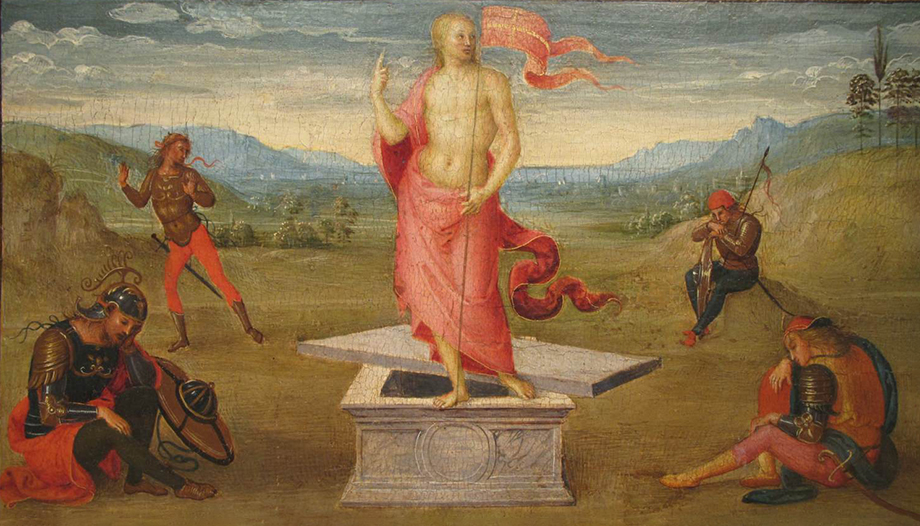Easter is the most special time of the year. The Apostolic Letter of St. Paul VI, Mysterii paschali, on the general norms of the liturgical year, n. 22, reminds us that every day of the liturgical year is a day of the year. Easter should be celebrated as one. The Easter sequence is also repeated in them Victimæ paschali, where, at the end, it is said: "Christ is risen, my Hope".
The resurrection has always been spoken of as a mystery of faith, as in Lk 24:34: "Indeed [actually: óntôs]The Lord is risen and has appeared to Simon!". Following Paul's teaching to the Corinthians, this reality is emphasized in a Semitic style: "Now if it is preached that Christ is risen from the dead, how do some of you go about saying that there is no resurrection of the dead? If there is no resurrection of the dead, neither is Christ risen. And if Christ is not risen, our preaching is empty, your faith is also empty." (1Cor 15:12-17).
True human nature
This is a reaction to the Gnostic tendency (duality of evil-good, matter-spirit, with a process of salvation through knowledge and not through the Redemption of Christ on the Cross) that began to take shape in the first century of our era, and which was consolidated in the second century. Already Ignatius of Antioch fought vividly against docetism (Jesus Christ would have had an apparent body), which, like the Gnostic doctrine, did not recognize in Jesus a true human nature, emphasizing at the same time his being God and man. At the end of the century, St. Irenaeus again emphasized this mystery in the face of the Gnostics.
The emphasis of theology on highlighting the real resurrection of Jesus Christ, with the same body that he had during his life on earth, although with different characteristics, judging by some passages of the Gospel in which the disciples do not recognize him (cf. Lk 24:16; Jn 21:4), is therefore understandable. In the words of Benedict XVI, "The empty tomb cannot, in itself, demonstrate the resurrection; this is true. But there is also the inverse question: Is the resurrection compatible with the permanence of the body in the tomb? Can Jesus have risen if he lies in the tomb? What kind of resurrection would this be?"; and added: "While the empty tomb per se cannot prove the resurrection, it remains a necessary presupposition for faith in the resurrection, since the resurrection refers precisely to the body and, by it, to the whole person." (Jesus of Nazareth II, Encuentro, Madrid, 312).
Indeed, faith in the mystery of the Resurrection of the Son of God presupposes the confession of the Incarnation according to the teaching of Chalcedon. verus Deus, verus homotrue God and true man. Other types of theories would lead, it is true, to certain doctrines, today in vogue, such as reincarnation, or the return to a different life, the apokatastasiswhich was already mentioned in Origins.
Foundation of hope
Looking closely at the beginning of chapter 11 of the Letter to the Hebrews, we find the statement: "Faith is a guarantee [hypostasis] of what is expected; the proof of unseen realities".. The Greek word presented to us by the author of the letter refers to the foundation, to that on which everything a Christian can hope for rests.
Thinking again of the paschal mystery, the logical consequence, according to this reasoning, is that faith in the resurrection will be the foundation of our Christian hope. This is what St. Peter says: "Blessed be the God and Father of our Lord Jesus Christ who, by his great mercy, through the Resurrection of Jesus Christ from the dead, has regenerated us to a living hope, to an inheritance incorruptible, undefiled and unfading, reserved in heaven for you, whom the power of God, through faith, protects unto salvation, ready now to be revealed at the last moment." (1 Pet 1:3-9).
This liturgical hymn presented to us by the Apostle Peter begins with a doxology linked to a thanksgiving, expressing the motive that led him to this praise, and ending with an exhortation to reach the goal of our faith, salvation. Not many think that it is a liturgical text within a baptismal catechesis, speaking at first of the regeneration that is achieved through the resurrection of Christ, by participating, through baptism, in his death (immersion) and in his resurrection (emersion), acquiring a divine life that will serve as a pledge of the future resurrection. This is why Peter speaks of an inheritance aphthartos, that nothing on earth can corrupt; amíantosthat cannot be contaminated by any earthly reality that is contrary to it, and amaranthIt is a hope that is unfading, unfading, that retains its radiance and strength throughout the Christian's life. This is why the mystery of the resurrection gives rise in a special way to hope, which is the true driving force of the Christian life. It is a hope that takes root in baptism, as the first letter of St. Peter says, the sacrament that opens the door to all the gifts and graces of salvation.
D. in Biblical Philology and Biblical Theology.








